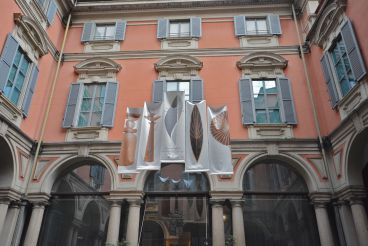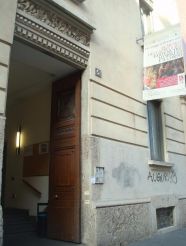Brera Art Gallery, Milan
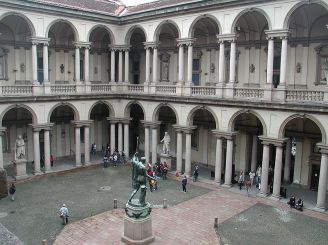
Brera Art Gallery (Pinacoteca di Brera) in Milan is an art gallery that is one of the largest and most famous galleries in the city. For over 200 years it has been a place of pilgrimage for art lovers. The museum features one of the most famous collections of Venetian and Lombardian pictorial schools. It exhibits masterpieces of Italian masters of the 14th and 19th centuries: Raphael, Caravaggio, Donato Bramante, Tintoretto, Mantegna and others. And also the work of European artists: El Greco, Rembrandt, Goya, Van Dyck. Brera Art Gallery is open in the palace with the same name, whose history dates back to the first half of the 13th century.
History of the Pinacoteca Building
The palace of Brera is located in the ancient monastery of the Order of Humiliati that was suppressed in 1571 by Pope Pius V. In the 12th century, the church of Santa Maria di Brera was part of the monastery. In the 16th century, the building and property were taken over by the Jesuits. They created a school, a library and an astronomical observatory here. Later, there was a need to expand and rebuild the monastery.
The current palace was built by the project of Francesco Maria Ricini, the construction began in about 1615. The epidemic of the plague in 1630 slowed down the process of erecting the palace. Construction work lasted until 1773, when the Order of the Jesuits was suppressed by Clement XIV, and the building passed to the rulers of northern Italy of that time – the Austrian dynasty of the Habsburgs. The construction of the palace in neoclassical style was completed by the famous architect Giuseppe Piermarini in 1776. In the same year the Academy of Fine Arts was founded by the decree of the Empress Maria Theresa.
Interesting facts about the Brera Art Gallery
- The opening of the gallery took place on August 15, 1809, the birthday of Napoleon. Three rooms were opened and only 139 paintings were presented.
- Originally, the art gallery was a branch of the Academy of Arts. In 1882, the Brera Art Gallery was separated from the Academy and awarded the status of the State Gallery.
- Brera Gallery has 38 rooms. The canvases are exhibited in chronological order, as well as schools of painting: Lombardy, Venice, Tuscany and others.
- The Pinacoteca occupies the second floor of the Brera Palace, and the Academy of Fine Arts is at the very first, with rooms for practical classes for students.
- In the courtyard of the palace there is a bronze copy of the statue of Napoleon in the form of a nude Mars the Peacemaker by Antonio Canova (1803-1806). The original made out of marble is kept in the Wellington Museum, London.
- A restoration workshop with glass walls is popular in the Pinacoteca di Brera. So you can see part of the restoration process.
- The main theme of the Brera Gallery is biblical times: the deeds of the saints and apostles, the life of the Virgin Mary and Jesus Christ, crucifixion. In addition to this, there are also landscapes, portrait painting, a collection of unique frescos, icons and sculptures.
- The word "Pinacoteca" is of Greek origin. This is how the Romans called rooms where picturesque images were stored. In our time, picture galleries are called Pinacotecas.
In the Brera palace, besides the picture gallery, there are also:
- National Library (Biblioteca Nazionale Braidense), one of the largest public libraries in Italy, opened in 1770.
- Botanical Garden (Orto Botaniko), a green oasis in the heart of Milan. Founded in 1774. Free admission.
- Astronomical Observatory (Osservatorio Astronomico di Brera), the opening date is 1764.
Museum collection
The Academy's collection began with small graphic drawings and copies of sculptures. This collection served as a visual aid for students. Everything radically changed after Napoleon's company in Italy in 1796 and the assertion of the French rule. Many monasteries and churches were suppressed by the new power, and confiscated masterpieces of art became a source of replenishment of various galleries, including the Brera Art Gallery in Milan. During the reign of Napoleon, the gallery received the status of a public art museum.
The main sections of the Brera gallery:
- Frescoes of Lombardy of 15–16 centuries.
- Paintings of Venice and Veneto region of the 14–16th centuries.
- Paintings of Lombardy of the 14–16th centuries.
- Regional art centers of Italy 15–17 centuries.
- Painting of Italy of 17–19 centuries.
- Painting masters of other countries of the 17th century.
- Painting masters of the 20th century.
- Archaeological collection.
- Medieval section.
Nowadays, the Brera Art Gallery owns unique painting masterpieces. Creations of recognized masters, and of the less famous ones are in each of the halls. Typically, most visitors are looking for the work of famous artists, among them: Titian, Correggio, Van Dyck, Rubens, Raphael. Here are some of the most famous paintings:
- Finding of the body of St Mark by Tintoretto (1548)
- Lamentation of Christ by Andrea Mantegna (1475–1478)
- Pieta by Giovanni Bellini (1466–1500)
- Saint John the Baptist by Francesco del Cossa (1472–1473)
- Madonna and Child with Saints by Piero della Francesca (1472–1474)
- Christ at the Column by Donato Bramante (1480–1481)
- The Marriage of the Virgin by Rafael Santi (1504)
- The Death of Cleopatra by Guido Cagnacchi (1660)
- The Kiss by Francesco Hayez (1859)
How to get there
Pinacoteca di Brera in Milan is located in the central part of the city on via Brera 28. You can get there by:
- the metro line M2 (green line) to the station Lanza,
- the metro line M3 (yellow line) to the station Montenapoleone;
- trams № 12, № 14;
- bus № 61.
Opening hours:
- Every day, except Monday from 8:30 to 19:15.
- Closed on the following days: January 1, May 1, December 25.
- The ticket office closes at 18:40.
- Every first Thursday and every third Thursday from 8:30 to 22:15, the ticket office works until 21:00.
Admission:
- Adult ticket – 10 euros, with a discount – 7 euro.
- On the first Sunday of the month the entrance to the museum is free (except for commercial exhibitions with separate tickets).
- The cost of an audio guide is 5 euros.
- Admission is free for children under 18.
Every third Thursday of the month there are musical evenings in the gallery. For 3 euros from 18:00 to 22:15 you can admire the collection and listen to the music of music school students. Every first Thursday for 2 euros from 18:00 to 22:15.
The museum permits photography (without flash). Video shooting and selfies are not allowed. In the exhibition halls there are comfortable chairs where you can relax and comfortably enjoy the masterpieces of the gallery. On the territory of the museum there are souvenir shops and a café.
The cost and opening hours can vary.



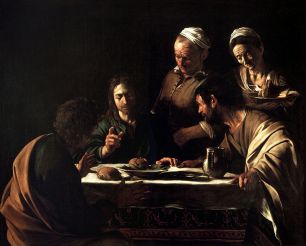
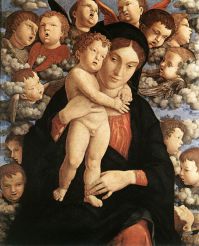
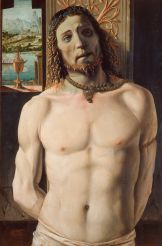
.jpg)
